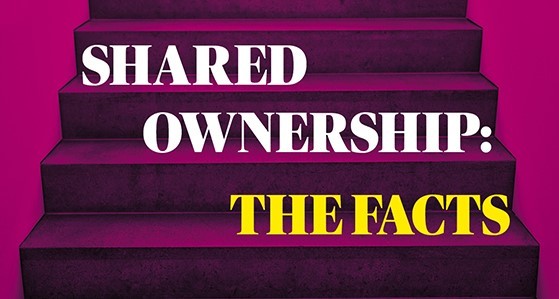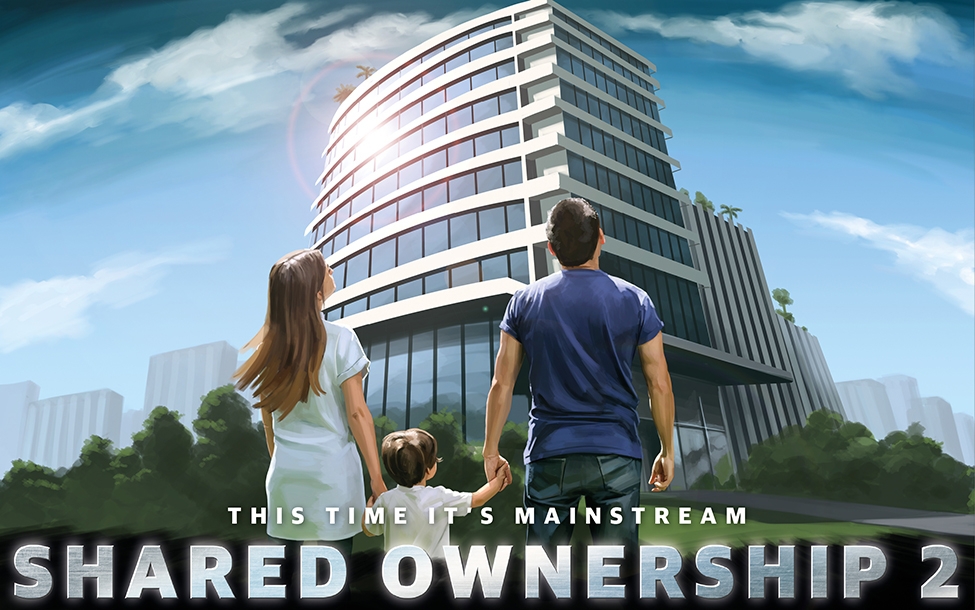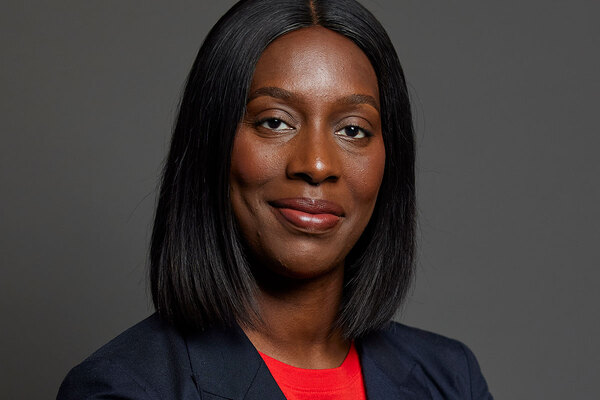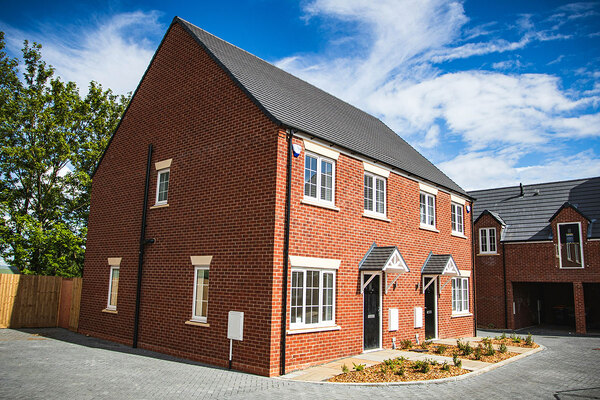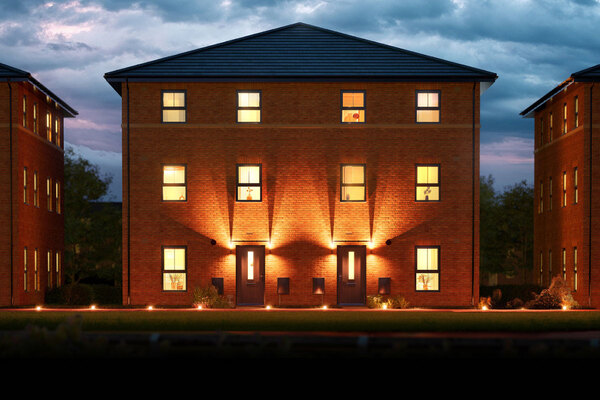Shared ownership 2
As shared ownership finally gets its big break, exclusive new data reveals how the tenure performs for the first time. Nick Duxbury reports
Video:
Feeet

Source: The Red Dress
After three decades playing bit-parts as a poorly understood niche product, shared ownership is finally being gifted a break-through leading role in tackling the housing crisis. No longer an extra alongside social rent, or an understudy to affordable rent, it’s now being trailed as the go-to affordable tenure for low-income households.
Directed by David Cameron himself, this big budget production is intended to support his vision of creating a new generation of homeowners. To ensure it finally proves a blockbuster hit, the government has shifted the vast majority of grant funding - £4.1bn -away from discounted rental products, to instead support shared ownership.
The housing sector has now been cast to build 135,000 homes in four years. Given it took 30 years to reach the 188,000 homes that make up the market which associations currently monopolise, this will be no mean feat. And, while shared ownership may have finally won over politicians, it is yet to fully convince lenders, investors and homebuyers. This is because of a lack of information to evidence buyer demographics, how well the tenure works, and what the risks attached are. Large-scale data sets simply haven’t existed. Or at least, they haven’t until now.
The National Housing Group (NHG), a body of 52 housing associations with 97,547 shared ownership homes between them, have clubbed together to fill this data vacuum, and have shared the findings exclusively with Inside Housing. Given the resulting data covers more than half the national market, this first snapshot should provide a starting point from which to address concerns about shared ownership and identify challenges in ramping up to meet the government’s 2021 target.
Viability measure
The first and most fundamental question asked of shared ownership is whether it really works as a solution to unaffordability. Given the government has relaxed eligibility rules to open shared ownership up to households earning up to £90,000 a year in London and £80,000 across the rest of England, and that it will replace discount rented housing, it’s a question worth asking.
Video:
Ad slot
According to the NHG’s most recent quarter of data up to April, the average annual household income of a shared ownership buyer in England is £30,347. Of the 43 associations that provided responses to this question, 25 said the average household income was less than £30,000 and five reported less than £20,000 - one as low as £16,341 a year. By contrast, the highest average earning submitted was £53,000 (only two organisations exceeded £50,000, which might be surprising given 19 organisations are London and South East-based).
“This shows the average [buyer] income is a good 25% less if you go the shared ownership route.” Nick Whitten, associate director, JLL
This means that the average shared owner’s income falls just below the £31,000 level set by the government as the measure of being a high-income household for the purposes of its Pay to Stay reforms (after which tenants must pay more rent), and comfortably below the London threshold of £40,000.
Nick Whitten, associate director at property consultancy JLL, says the figures compare favourably against the average first-time buyer income of £41,000. “This shows the average income is a good 25% less if you go the shared ownership route.”
Of course, the deposits are also likely to be far lower than the first-time buyer average of £42,505.
However, the average shared ownership buyer age of 35 is only four years younger than the market sale average.
“Starter Homes and Help to Buy don’t cater for people who have a household income of £19,000.” Amy Nettleton, chair, NHG.
Amy Nettleton, chair of the NHG and head of sales and marketing at South West-based Aster Group, says the figures show that shared ownership is working as a genuinely affordable tenure. “The income threshold shows the product is needed,” she argues. “Starter Homes and Help to Buy don’t cater for people who have a household income of £19,000. In the north [of England] you can get a deposit for a couple of grand. People would rather take that short-term hit on a deposit [in order to buy a stake in a home] instead of going into the private rented sector.”
Another measure is whether people are staircasing to greater stakes of ownership. According to the NHG members, 2,595 households stair-cased in the past financial year. Of these, the vast majority - 1,990 households - bought their homes outright, and 633 bought further shares. On average, they did so after four years and six months - a period that mirrors the time in which a mortgage usually comes to an end, suggesting that remortgaging is a catalyst for staircasing.
There were also 2,292 resales. Ms Nettleton says this indicates that the secondary market is working too. “A lot of people are buying additional shares and staircasing out,” she says. “Are they staircasing out because they can or because they don’t like the product? We don’t know… The reality is it is being used as a stepping stone.”
“Housing associations are split down the middle on staircasing in shared ownership; they either hate it, or they love it.” Kelly McCabe, managing director, TMP Sherwins.
This does, however, pose the question of why more are not incrementally staircasing.
“Housing associations are split down the middle on staircasing in shared ownership; they either hate it, or they love it,” says Kelly McCabe, managing director of shared ownership mortgage broker TMP. This, she explains, depends on whether they are chasing income or trying to realise sales. “Also, in a rising market, people can be priced out,” she adds. “More people fully staircase because there are a lot of hurdles [to staircasing incrementally].”
Many associations acknowledge this: while 59% of NHG members told Inside Housing that shared ownership works either “very” or “quite well”, 41% said it could work better, pointing to simplifying the product -
especially the leases.
Repossessions
One criticism often voiced about shared ownership is the risk that if owners fall into arrears on their rent, they can be evicted by their housing association and lose all their equity. So how often is this actually happening?
According to the NHG figures, in 2014/15, 13.1% of shared owners, or 12,770 households, were in some form of rent arrears. This is less than half the social sector average of 31%, but it is much higher than the private rented sector average of 1.6% according to estate agents Your Move. According to the Council of Mortgage Lenders (CML), the proportion of mortgages in arrears is much lower at 0.9%. However, this is not like for like. It is also notable that the actual amount of rent owed is quite low at £495.53. The acid test of the associated risk is the level of repossessions - and the NHG data shows these are rare. In the 2015 financial year there were just 109 repossessions, representing 0.1% of the stock. This compares with an approximate figure of about one in 5,000, or 0.02% of general mortgages being repossessed.
A fairer comparison would be with the repossession rate for first-time buyers, but this data does not exist.
Perhaps the biggest question hanging in the balance now is whether associations are able to step up and build 135,000 homes by 2020.
Analysis carried out by real estate consultancy JLL indicates a shift is already underway.
The NHG data reveals that despite blows such as the 1% rent cut, associations have a current collective development pipeline of 24,598 shared ownership homes, and are planning to build 13,035 a year for the next three years.
“That is a doubling of the historic average delivery,” says Mr Whitten. “They [NHG members] look like they are ramping up already. But to get to 135,000 between now and the end of parliament requires 35,000 shared ownership homes a year. They [the NHG] are only doing a third of what is needed each year, so they will need to up their game if they are to hit that target.”
Even if the associations that make up the remaining half of the market build at a similar pace, there would still be a shortfall. The government wants new players to fill this supply gap. Several large listed house builders are on the verge of wading into shared ownership for the first time.
“We are working with private developers - the biggest players that you can imagine - who want to get into the market,” reveals Ms McCabe. “If they deliver shared ownership themselves then it circumnavigates the need to provide Starter Homes. They get more bang for their buck and get to keep more control. They are very, very close to getting one away.”
There is huge demand for shared ownership - Ms McCabe reports nine buyers for every home - so new entrants should not be a threat. But this demand is being tempered by two problems.
“If we ramp up output we will need more lenders to come in as the numbers increase.” Craig Hall, new build manager, L&G Mortgage Club.
The first is that there aren’t enough lenders in the market to provide mortgages for an additional 135,000 shared ownership homes. Only a minority of lenders (just 16) offer shared ownership mortgages, and Nationwide has warned that government will need to address the structure of leases if it is to bring more players to the table.
Craig Hall, new build manager at the L&G Mortgage Club, says the wider historic reason for reticence is the perception of complexity coupled with lower margins. “If they [lenders] can get higher margins from vanilla lending, why change?” he explains. In reality, he says, the risks are low.
“The margins are reasonable - also customers tend to stay with lenders. We need a shared ownership remortgage market. If we ramp up output we will need more lenders to come in as the numbers increase. That will improve competition and regulation.”
To address this, L&G’s mortgage club has formed a working party to ‘bust myths’ and attract new lenders. Mr Hall says lenders are starting to come round, and he is aware of up to 10 interested in entering the sector. But much will depend on what terms they are willing to offer. “We need more lenders to come in at higher - 95% - loan to values,” he adds.
The second problem is that other government housing policies may undermine this effort. In London, there is Help to Buy, which may be more attractive than shared ownership because it offers a 40% equity loan that is interest-free for the first five years. But the real competition comes from the government’s plan to also build 200,000 Starter Homes. These are to be sold at a 20% discount to first-time buyers under the age of 40 and will make up 20% of affordable housing provision on new schemes. The concern is that this primary new affordable tenure will be cheaper and more attractive than shared ownership in lower-value areas.
Last month, the CML warned that the government’s shared ownership target could be “jeopardised by a compulsory Starter Homes requirement”. Similarly, landlords in the north have warned of the threat Starter Homes pose to demand.
Investor line-up
Robert Grundy, partner at property consultancy Savills, is less concerned. He believes the ability to pre-sell shared ownership and de-risk schemes means there may well be more shared ownership homes built by house builders than Starter Homes. Furthermore, he sees the sector as ripe for investment from sovereign wealth funds and institutional funds.
“We are looking at a new asset class here,” he says. “What we’ve got, providing it is done properly, is a very secure income stream. Plus you have the receipts from staircasing… It is kind of an extension of the interest for the private rented sector, except there is less risk in it.”
Indeed, Savills research suggests, assuming low rates of staircasing, a potential internal rate of return of 8% on a 100-home portfolio.
The wooing of investors is already underway on schemes in London, and, separately, the government is understood to be considering offering guarantees to attract more pension fund investors.
Right now, though, housing associations are focused on the £4.1bn being offered up by the government. Bids close in September.
This means that the next few months will largely dictate the extent to which shared ownership is finally able to become a mainstream box office hit. Ms Nettleton is adamant that the NHG members will be taking a lead on delivery.
“The sector has to do something to up its game,” she says. “What we cannot do is miss this opportunity and then moan about it afterwards.”
